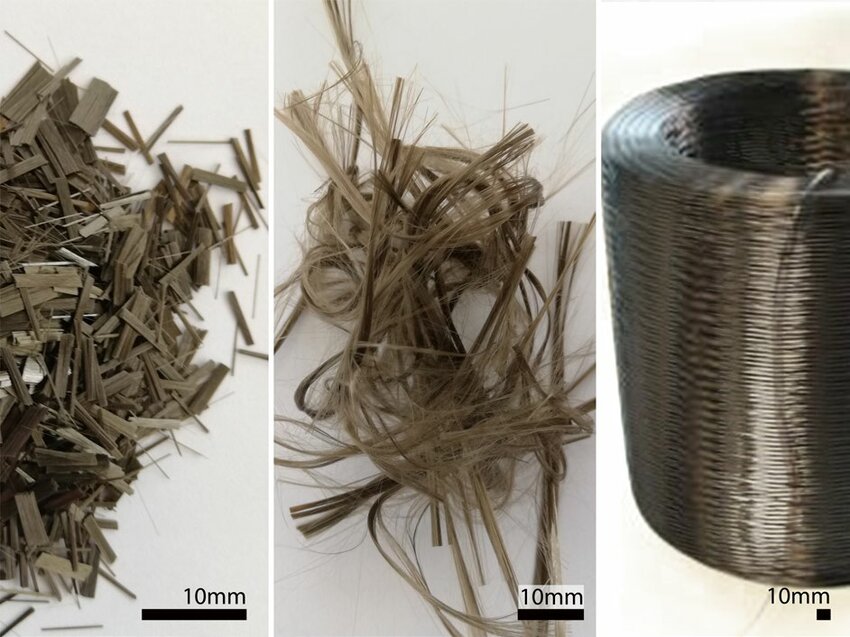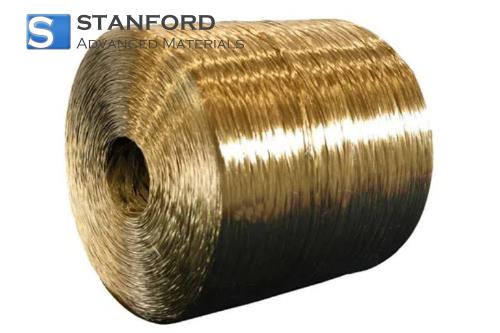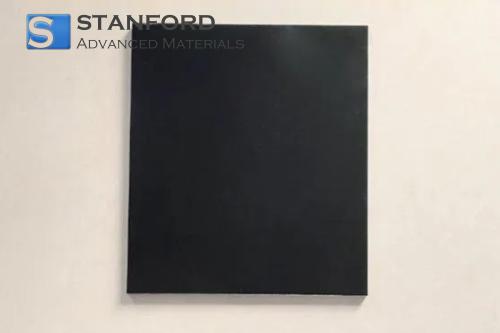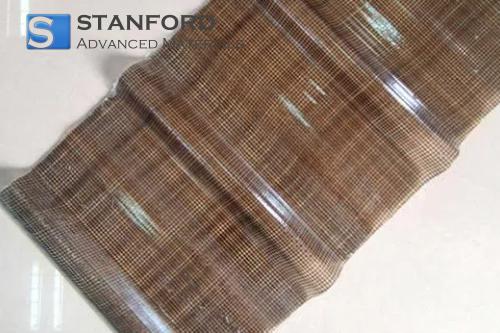A Complete Guide To Basalt Fiber
The Rise of Basalt Fibre
Basalt fibres are rapidly emerging as a serious competitor in the field of high-performance composite materials. They are produced directly from natural volcanic rock and combine strength, durability, chemical resistance and thermal stability. They are environmentally friendly and relatively cost‐effective. This fibre serves as a solution for aerospace, construction, automotive and energy sectors alike.
What is basalt fibre? What qualifies it for extreme conditions, and how does it perform compared with established materials such as glass and carbon fibres? This guide presents an overview of the properties, applications and product forms of basalt fibre and provides detailed insight into a material that is used in high-performance composites.

Fig.1 Basalt fibres used in the samples. From left to right: chopped (left), spooled (middle) and continuous (right). [1]
Key Properties of Basalt Fibres
1. Natural Origin and Composition
Basalt fibres are manufactured from fractured basalt rock – a volcanic rock commonly found in the Earth’s crust. Unlike many synthetic fibres, basalt requires no additives. It is melted at approximately 1 450 °C and extruded through fine nozzles to form continuous filaments. The final material exhibits uniform composition and chemical stability.
2. High Thermal Resistance
One notable property of basalt fibres is their capacity to retain mechanical integrity at temperatures up to 800 °C. This temperature threshold considerably exceeds that of glass fibres. They do not burn and provide effective thermal insulation.
3. Chemical and Corrosion Resistance
Basalt fibres demonstrate excellent resistance to corrosion and chemicals when compared with glass and carbon fibres. They resist alkaline solutions, acids, salt water and a range of solvents. Consequently, they are suited for marine, chemical industry and sub-surface applications.
4. Mechanical Strength and Durability
Although basalt fibres do not achieve the tensile strength of carbon fibres, they exceed glass fibres in terms of strength-to-weight ratio and exhibit reliable fatigue resistance. They are resistant to cracking and maintain their strength under mechanical and environmental stresses.
5. Environmental Considerations
Because basalt fibres are produced directly from natural rock without chemical additives, their production process is relatively clean. They are fully recyclable, which is advantageous for applications requiring environmental compliance.
Basalt Fibre vs. Glass Fibre vs. Carbon Fibre
|
Property |
Basalt Fibre |
Glass Fibre |
Carbon Fibre |
|
Raw Material |
Basalt rock |
Quartz sand and other additives |
Polyacrylonitrile (PAN) or pitch |
|
Production Complexity |
Moderate |
Low |
High |
|
Tensile Strength |
~4 800 MPa |
~3 400 MPa |
~5 000–7 000 MPa |
|
Temperature Resistance |
Up to 800 °C |
Up to 600 °C |
Up to 400 °C |
|
Corrosion Resistance |
Excellent |
Moderate |
Poor (if not coated) |
|
Cost |
Moderate |
Low |
High |
|
Environmental Impact |
Low |
Moderate |
High |
|
Weight |
Moderate |
Moderate |
Very low |
Basalt fibres provide performance characteristics that are numerically intermediate between glass and carbon fibres. They offer higher thermal and chemical resistance than glass fibres and incur lower costs as well as reduced environmental impact compared with carbon fibres. Although they are not as strong or light as carbon fibres, they provide a practical balance for various structural and thermal applications.
Primary Applications of Basalt Fibres
1. Aerospace and Defence
The Chang'e 6 mission demonstrated that basalt fibres, owing to their thermal stability and low weight, are suitable for insulation in aerospace applications, as well as for protective casings and structural components. They may be used in defence systems for blast protection, fire barriers and camouflage coatings.
2. Construction and Civil Engineering
In the construction industry, basalt fibres serve as an alternative to steel reinforcement in concrete. Basalt reinforcement and fibre-reinforced polymer (FRP) meshes are corrosion‐resistant, lightweight and durable, making them suitable for infrastructure exposed to moisture, chemicals or salt.
3. Automotive and Transportation
Basalt fibre composites are employed in automotive panels, exhaust systems and insulation. They reduce weight while maintaining strength and provide effective vibration damping and heat resistance.
4. Marine and Offshore
Due to their resistance to salt water, basalt fibres are suitable for boat hulls, offshore platforms and pipelines. They offer improved resistance to biofouling and corrosion compared with steel or conventional composites.
5. Fire Protection and Insulation
Basalt fibre blankets and felts are used in fire protection for buildings, industrial facilities and tunnels. They also provide insulation for ovens, exhaust systems and high‐temperature piping.
6. Sports Equipment and Consumer Goods
In sports equipment, including snowboards, bicycles and fishing rods, basalt fibres increase strength and reduce vibrations. They are also applied in designer furniture and accessories.
Basalt Fibre Product Range
Basalt fibres are available in a variety of forms that meet the requirements of different industries from construction to aerospace. At the centre of this range is continuous basalt fibre (CBF), produced by melting and extruding basalt rock into fine filaments. These fibres are subsequently processed into various product types.
Rovings and yarns are used in weaving, pultrusion and filament winding for structural composites. Chopped fibres, which are typically only a few millimetres long, are incorporated into concrete, asphalt and plastics to enhance mechanical properties and reduce crack formation.
Fabrics produced from basalt yarns are frequently used for fire protection, reinforcement and thermal shielding. For insulation and fire protection, nonwovens and blankets offer high temperature resistance suitable for industrial ovens, pipelines and protective clothing.
Tapes and cuffs are used for thermal encasement and local reinforcement, while basalt reinforcement offers a corrosion‐resistant alternative to steel in concrete. Finally, composite panels and mats provide lightweight, durable solutions for applications in transportation, marine and construction sectors.
Conclusion
Basalt fibres are no longer merely a geological curiosity but a material utilised in advanced applications. They exhibit a combination of mechanical strength, thermal resistance, corrosion protection and environmental compatibility. They are applicable in both terrestrial and aerospace environments. For further information and technical support, please refer to Stanford Advanced Materials (SAM).
Reference:
[1] Basalt fibres used in the samples. From left to right: chopped (left), spooled (middle) and continuous (right).

 Bars
Bars
 Beads & Spheres
Beads & Spheres
 Bolts & Nuts
Bolts & Nuts
 Crucibles
Crucibles
 Discs
Discs
 Fibers & Fabrics
Fibers & Fabrics
 Films
Films
 Flake
Flake
 Foams
Foams
 Foil
Foil
 Granules
Granules
 Honeycombs
Honeycombs
 Ink
Ink
 Laminate
Laminate
 Lumps
Lumps
 Meshes
Meshes
 Metallised Film
Metallised Film
 Plate
Plate
 Powders
Powders
 Rod
Rod
 Sheets
Sheets
 Single Crystals
Single Crystals
 Sputtering Target
Sputtering Target
 Tubes
Tubes
 Washer
Washer
 Wires
Wires
 Converters & Calculators
Converters & Calculators
 Write for Us
Write for Us



 Chin Trento
Chin Trento


